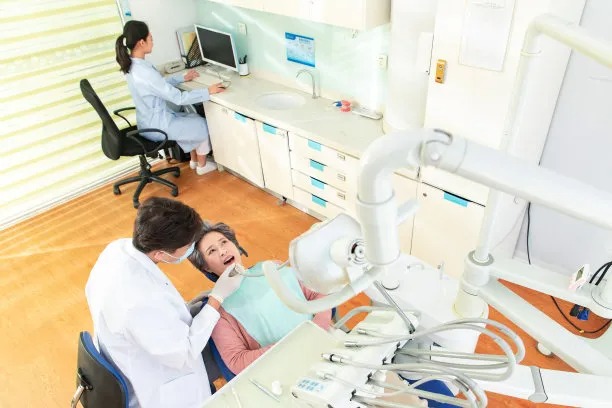The Essential Steps and Considerations for Safely Extracting a Tooth in Dental Practice and Patient Care
Summary: Tooth extraction is a common procedure in dental practice that, when performed correctly, leads to minimal complications and improves patient outcomes. This article delineates the essential steps and considerations required to safely carry out tooth extractions. It discusses the importance of patient assessment, preparing the treatment area, the execution of the extraction procedure, and post-operative care. Implementing these key elements will not only enhance the effectiveness of the procedure but also optimize patient comfort and recovery, establishing a foundation for quality dental care.
1. Importance of Patient Assessment

Before any dental extraction, a thorough patient assessment is crucial for identifying risks and ensuring a tailored approach. This includes reviewing the patients medical history, any medication they are taking, and understanding their anxiety levels. This comprehensive evaluation helps the dentist determine if the patient is fit for the procedure and what precautions should be taken.
In cases involving complex medical conditions, such as cardiovascular issues or bleeding disorders, consulting with the patients physician may be necessary. This allows dental professionals to make informed decisions and adjust their approach, potentially involving collaborative treatment planning.
Additionally, diagnostic imaging, such as X-rays, is indispensable to assess the tooth’s structure and the surrounding bone. A clear visualization facilitates a safer extraction process and helps anticipate any complications, ensuring a smoother procedure.
2. Preparing the Treatment Area
Creating a sterile and organized treatment environment is critical for minimizing infection risk and enhancing procedural efficiency. The dental team should ensure that all instruments are sterilized and readily available, following strict infection control protocols. This includes the use of gloves, masks, and other personal protective equipment to safeguard both staff and patients.
Moreover, a calm and reassuring atmosphere can significantly affect the patient’s experience. The dental team should communicate effectively with the patient about what to expect during the extraction, aiming to alleviate any anxiety. Comfortable seating and appropriate analgesia options should be presented to the patient to ensure optimal comfort throughout the procedure.
In addition, proper positioning of the patient is vital. The positioning should allow optimal access to the extraction site while ensuring the patients comfort. Effective lighting and suction equipment also play a role in keeping the area clean and clear of blood and debris during the extraction.
3. Executing the Extraction Procedure
The actual tooth extraction requires a systematic approach, beginning with local anesthesia to ensure patient comfort. The dentist should ensure that the numbness is adequate before proceeding to minimize any discomfort. This step cannot be overlooked, as a patient who feels pain during the procedure may become anxious and uncooperative.
Once anesthesia takes effect, the dentist can carefully extract the tooth using appropriate surgical techniques. Using the right instruments and following a protocol ensures safety and effectiveness. The dentist should be attentive to any signs of complications during the extraction, such as excessive bleeding or fractured roots, and have a plan in place to address these issues should they arise.
After removing the tooth, the dentist should evaluate the extraction site to ensure no fragments remain and that the surrounding tissue is healthy. Properly suturing the site, if necessary, and taking steps to control bleeding are crucial to closure. Educating the patient on what to expect during the recovery phase also sets the stage for optimal healing and satisfaction.
4. Emphasizing Post-Operative Care
Post-operative care is a critical aspect of a successful tooth extraction, greatly affecting the patients recovery. Clear instructions should be provided to patients regarding pain management, dietary restrictions, and signs of complications. This empowers them and promotes adherence to aftercare, aiding in a smooth recovery process.
Regular follow-up appointments may also be necessary to monitor the healing process and to manage any potential complications early. These check-ups are essential in ensuring that the site is healing appropriately and that theres no development of infections or other issues.
Furthermore, the dentist should encourage patients to maintain good oral hygiene while avoiding the extraction site to promote healing. Educating the patient on the importance of their role in the recovery process can help mitigate risks and enhance overall outcomes.
Summary:
In conclusion, safely extracting a tooth involves a series of essential steps, from patient assessment and preparation to effective execution and post-operative care. Each aspect contributes significantly to the overall success of the procedure, ensuring patient comfort and minimizing complications. By adhering to these guidelines, dental practitioners can provide high-quality care that fosters positive patient experiences and outcomes.
This article is compiled by Vickong Dental and the content is for reference only



